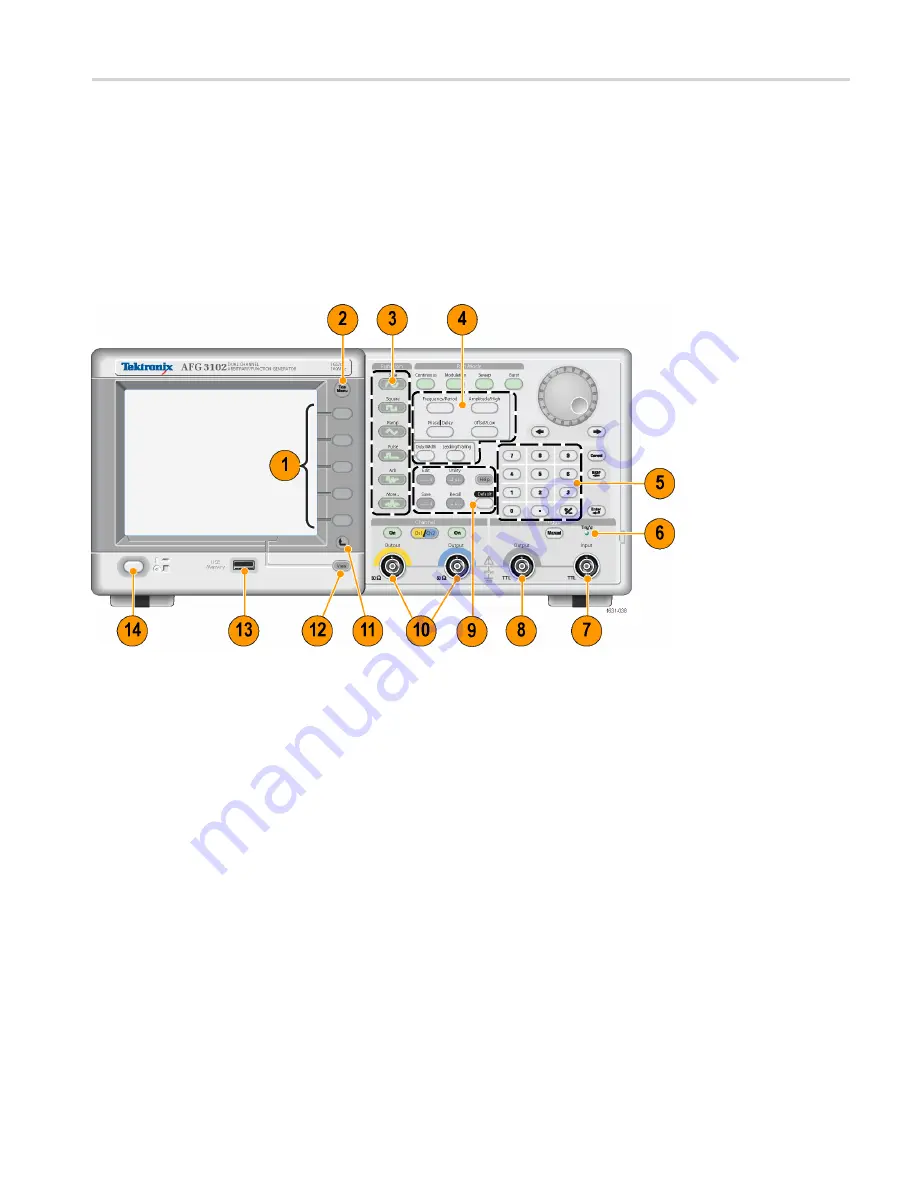
Instrument interface, front panel, and rear panel
Instrument interface, front panel, and rear panel
Front panel overview
The front panel is divided into easy-to-use functional areas. This section provides
you with a quick overview of the front panel controls and the screen interface.
The following
fi
gure shows the front panel of the dual-channel model.
1.
Bezel menu buttons
2.
Top menu button
3.
Function buttons
4.
Shortcut buttons
5.
Numeric keypad
6.
Triggered LED is lit when the instrument receives an internal or external
trigger
7.
Trigger input connector
8.
Trigger output connector
9.
Menu buttons
10.
CH 1 and CH 2 output connectors
11.
Return to previous menu button
12.
View button
AFG3000 and AFG3000C Series User Manual
25
Summary of Contents for AFG3000 Series
Page 2: ......
Page 3: ...AFG3000 and AFG3000C Series Arbitrary Function Generators ZZZ User Manual xx...
Page 6: ......
Page 9: ...List of Figures Figure 1 Fuse and fuse adapter 13 AFG3000 and AFG3000C Series User Manual iii...
Page 12: ...Environmental Considerations vi AFG3000 and AFG3000C Series User Manual...
Page 104: ...Operating basics 90 AFG3000 and AFG3000C Series User Manual...
Page 110: ...Application Examples 96 AFG3000 and AFG3000C Series User Manual...
















































